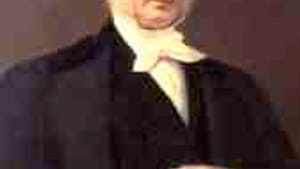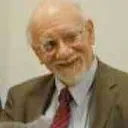Stay in the Loop
BSR publishes on a weekly schedule, with an email newsletter every Wednesday and Thursday morning. There’s no paywall, and subscribing is always free.
New adventures in reading: My first e-book experiment
Electronic books vs. ink on paper

I first experienced the reader's trance when I was seven. A cousin left a copy of Bambi lying around-- the real Bambi, the novel by Felix Salten, not the cutesy Walt Disney kid version. I picked it up and wham! I was huddling inside a thicket, with the animals talking around me, completely oblivious to the world outside my head.
Naturally, I went looking for more. Felix Salten had transformed me into the catastrophe feared by every American parent: the boy whose nose is always buried in a book.
I've never understood the conventional distinction between "escape reading" and serious reading. Anything that holds my attention offers me an escape from my immediate circumstances. Biographies and histories work just as well as fiction. In the Army, I escaped from basic training by ducking into The Uses of the Past, Herbert J. Muller's lucid, civilized discussion of Western history. Even books on subjects like economics and cosmology recall happy memories for me
But would I slip into that happy state reading off an electronic reader? The trance is partly an effect of conditioning. We associate a set of emotional responses with a physical object of a certain heft, shape and texture. Can a plastic rectangle produce the same effect as several hundred pages bound between well-designed covers?
Taking the plunge
I've been contemplating buying an e-reader for more than a decade. Science fiction characters have been fiddling around with variations on the concept since I started exploring the genre 60 years ago. When I finally took the plunge over the July Fourth weekend, I decided to see how it affected the lower-intensity feelings evoked by non-fiction.
I picked the top candidate on my list, Pietra Rivoli's heavily revised update of her 2005 instant classic, The Travels of a T-Shirt in the Global Economy. It felt a little funny on my Barnes and Noble Nook, and I missed some of my favorite passages from the first edition, but it was just as moving as the original. By the time I reached the final section (on the Third World market in Western castoffs), I was seeing people and scenes just like I see them when I read print.
Sinking into Vanderbilt
From there I moved to T.J. Stile's biography of Cornelius Vanderbilt, The First Tycoon, and discovered I could sink into it just the way I normally sink into long biographies. The final passages, in which the 80-year-old commodore copes with the panic of 1873, swept me along with all the forward drive of a first-class thriller.
I probably shouldn't have been surprised. I've never confined my reading to books. By my early teens I was compulsively devouring pocket-sized paperbacks, trade paperbacks, slick magazines, pulp magazines, digest-sized magazines and standard and tabloid newspapers. Viewed from that perspective, the e-book is just another format.
Paperbacks once seemed foreign to readers raised on hard covers. Young Turks like me often preferred paperbacks because they were more colorful.
What about fiction?
But what about fiction? I made my first foray into that realm by reading a novelette from the latest edition of The Year's Best Science Fiction, edited by Gardner Dozois. I selected this anthology for my experiment because (a) it's a large, exceptionally heavy book in its print version and (b) I couldn't resist buying the download while I was brunching with the editor.
Paul Cornell's novelette, One of our Bastards is Missing, read, as far as I could tell, about the way it would have read in print. I heard the same voices in my head. I saw the same kind of images. I've read several other stories since I started drafting this piece, and all of them did what they're supposed to do.
A few drawbacks
E-books have their disadvantages. The navigation procedures are still clumsy, compared to the ease with which you can move around a website, and they aren't as aesthetically satisfying as print books.
But remember: We're looking at a new technology. A modern book is a product designed by highly trained people building on centuries of experience with typography, layout and subtleties like the ratio between height and width. The books produced in the first century of printing often look dull and uninviting to modern readers. Henry Ford's first Model T lacked air conditioning and power steering.
Skeptics proved wrong
When commercial e-books appeared in the mid-'90s, some publishers and editors called them an invention without a need. Print, the skeptics argued, is a highly developed, inexpensive technology that fulfills all the needs of readers. The developments of the last three years indicate they were wrong.
Travelers provided the first specialized market. The best-selling writer Neil Gaiman, one of the hardest-traveling book promoters in the publishing industry, has said that his Kindle is the second best book format you can take on an airplane-- and the best library. Rail and bus commuters form another big audience.
Other people are buying e-readers because they can't hold big books any longer or they need larger typefaces. I bought mine partly out of curiosity and partly because I like the idea of a fully searchable personal library— and my apartment is running out of space for bookshelves.
Amazon's figures
Will e-books replace print? No one knows. Amazon, the world's largest bookseller, now sells more e-books than hard-cover print books. According to some sources, e-book sales now account for 10% of all book sales, which means they've become just as important, on publisher's spreadsheets, as audio books.
But in the midst of all the hoopla that accompanies technological change, we shouldn't forget that ink and pixels are merely physical embodiments of something far more fundamental. Publishing, in all its manifestations, is primarily a system for transmitting words from the minds of writers to the minds of readers. The Word is the alpha and omega of the whole enterprise. And the Word is still with us.
Naturally, I went looking for more. Felix Salten had transformed me into the catastrophe feared by every American parent: the boy whose nose is always buried in a book.
I've never understood the conventional distinction between "escape reading" and serious reading. Anything that holds my attention offers me an escape from my immediate circumstances. Biographies and histories work just as well as fiction. In the Army, I escaped from basic training by ducking into The Uses of the Past, Herbert J. Muller's lucid, civilized discussion of Western history. Even books on subjects like economics and cosmology recall happy memories for me
But would I slip into that happy state reading off an electronic reader? The trance is partly an effect of conditioning. We associate a set of emotional responses with a physical object of a certain heft, shape and texture. Can a plastic rectangle produce the same effect as several hundred pages bound between well-designed covers?
Taking the plunge
I've been contemplating buying an e-reader for more than a decade. Science fiction characters have been fiddling around with variations on the concept since I started exploring the genre 60 years ago. When I finally took the plunge over the July Fourth weekend, I decided to see how it affected the lower-intensity feelings evoked by non-fiction.
I picked the top candidate on my list, Pietra Rivoli's heavily revised update of her 2005 instant classic, The Travels of a T-Shirt in the Global Economy. It felt a little funny on my Barnes and Noble Nook, and I missed some of my favorite passages from the first edition, but it was just as moving as the original. By the time I reached the final section (on the Third World market in Western castoffs), I was seeing people and scenes just like I see them when I read print.
Sinking into Vanderbilt
From there I moved to T.J. Stile's biography of Cornelius Vanderbilt, The First Tycoon, and discovered I could sink into it just the way I normally sink into long biographies. The final passages, in which the 80-year-old commodore copes with the panic of 1873, swept me along with all the forward drive of a first-class thriller.
I probably shouldn't have been surprised. I've never confined my reading to books. By my early teens I was compulsively devouring pocket-sized paperbacks, trade paperbacks, slick magazines, pulp magazines, digest-sized magazines and standard and tabloid newspapers. Viewed from that perspective, the e-book is just another format.
Paperbacks once seemed foreign to readers raised on hard covers. Young Turks like me often preferred paperbacks because they were more colorful.
What about fiction?
But what about fiction? I made my first foray into that realm by reading a novelette from the latest edition of The Year's Best Science Fiction, edited by Gardner Dozois. I selected this anthology for my experiment because (a) it's a large, exceptionally heavy book in its print version and (b) I couldn't resist buying the download while I was brunching with the editor.
Paul Cornell's novelette, One of our Bastards is Missing, read, as far as I could tell, about the way it would have read in print. I heard the same voices in my head. I saw the same kind of images. I've read several other stories since I started drafting this piece, and all of them did what they're supposed to do.
A few drawbacks
E-books have their disadvantages. The navigation procedures are still clumsy, compared to the ease with which you can move around a website, and they aren't as aesthetically satisfying as print books.
But remember: We're looking at a new technology. A modern book is a product designed by highly trained people building on centuries of experience with typography, layout and subtleties like the ratio between height and width. The books produced in the first century of printing often look dull and uninviting to modern readers. Henry Ford's first Model T lacked air conditioning and power steering.
Skeptics proved wrong
When commercial e-books appeared in the mid-'90s, some publishers and editors called them an invention without a need. Print, the skeptics argued, is a highly developed, inexpensive technology that fulfills all the needs of readers. The developments of the last three years indicate they were wrong.
Travelers provided the first specialized market. The best-selling writer Neil Gaiman, one of the hardest-traveling book promoters in the publishing industry, has said that his Kindle is the second best book format you can take on an airplane-- and the best library. Rail and bus commuters form another big audience.
Other people are buying e-readers because they can't hold big books any longer or they need larger typefaces. I bought mine partly out of curiosity and partly because I like the idea of a fully searchable personal library— and my apartment is running out of space for bookshelves.
Amazon's figures
Will e-books replace print? No one knows. Amazon, the world's largest bookseller, now sells more e-books than hard-cover print books. According to some sources, e-book sales now account for 10% of all book sales, which means they've become just as important, on publisher's spreadsheets, as audio books.
But in the midst of all the hoopla that accompanies technological change, we shouldn't forget that ink and pixels are merely physical embodiments of something far more fundamental. Publishing, in all its manifestations, is primarily a system for transmitting words from the minds of writers to the minds of readers. The Word is the alpha and omega of the whole enterprise. And the Word is still with us.
Sign up for our newsletter
All of the week's new articles, all in one place. Sign up for the free weekly BSR newsletters, and don't miss a conversation.

 Tom Purdom
Tom Purdom